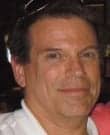Location, location, location,” goes the common refrain in real estate, but the same can be said of the Nebraska-based biomed group the Heartland Biomedical Association (HBA). With the majority of its members located in the large, metropolitan cities in the Eastern region of the state, increasing the membership or gaining attendance from the biomeds stationed to the West can be difficult, often requiring anywhere from 200 to 400 miles of travel to attend events.

Jay Squires, HBA president
“Our members actually do come from all over the state of Nebraska, but just like the population of Nebraska, it’s mostly centered in the Eastern third,” says Bill McSharry, CBET, senior biomedical technician, Alegent Health, Omaha, Neb, and a former vice president and president of the HBA. “We also do get people from Western Iowa, and we have had students from South Dakota at our symposium.”
“The biggest challenge is probably membership growth,” says Jay Squires, clinical engineering, Saint Elizabeth RHC, Lincoln, Neb, and current HBA president. “We have a core group of guys that come each and every time. And we have a pretty good turnout for the symposium. But membership building is a big part of it, and also the distance. We have a lot of hospitals that are in rural areas far away, and it’s tough for those guys to get away from work early to come out. So I think the biggest problem is membership building and distance for us. Lincoln and Omaha are the two big metro areas, and the farther out west you go, you start getting into smaller populations and maybe one or two biomeds in that area.”
Distance and Technology
Maintaining and growing membership is a common struggle for many biomed associations, but this untenable distance largely causes the HBA’s troubles. However, that has necessitated that the association become more technologically advanced, and it forced them to try and find ways of coping with this issue.
One of those solutions has been to go digital. Though the association does not broadcast all of its membership meetings via the Internet, it has in the past and would like to utilize this approach more often in the future—if they are able to work out some of the technical glitches.
“A couple of times last year, we tried to do a streaming Web format during the meeting, but we had limited success doing that—mostly technical problems,” McSharry says. “We normally change location every time there’s a meeting, and we had some participants out in Western Nebraska that were interested, but just trying to get a good enough Internet connection at every place that the meetings were held and getting it all set up didn’t work out too well. That’s on our table as something to do in the future because I know that there are some associations that do that very well.”
The HBA also recently revamped its Web site in an effort to make it more appealing and useful to its widespread membership base. Though the leadership admits to not using the site to its fullest capabilities yet—having members RSVP for events on the Web site, for example—the redesign was a vast improvement over the previous site and still contains valuable information, like the association’s bylaws, newsletter, and updates about future events.
A Revamped Symposium

Bill McSharry, CBET
Other than utilizing digital resources, the HBA has also enhanced its annual symposium in an effort to boost membership and supply added benefits to its existing member base. Last year, the association introduced a vendor fair at the event—replete with awards for members who talked with every vendor in attendance—to complement the extended educational sessions throughout the 2-day symposium.
“Between the first and second day, in the afternoon, we had a vendor fair where we didn’t have any more training sessions and we just concentrated on the vendors,” Squires says. “We had seven vendors last year—it was the first year that we had done it—and we’re going to have a vendor fair again this year. I thought that was pretty successful. We were cramped for space because you never know how much stuff the vendors will bring in, but we plan on doing it again this year, and we’ve had some folks say, ‘Keep us in the loop for the next symposium. We definitely want to do that.’ “
Despite all of this success and progress, the leadership of the HBA is not sitting on their hands. Though the association aims to improve the careers and knowledge of its members through education and resources, Squires would like for the meetings to feature more training offerings to its members. Given the relative distance of meeting locations to vendors, enticing them to come can be difficult, but in spite of these struggles, the association will strive to bring in vendors for intensive training sessions.
“The biggest thing is to start doing some more extensive training,” Squires says. “Start bringing in different folks who can give us training on equipment. Maybe do some 1- or 2-day training on equipment where they really break down the equipment and go through the PMs. Our meetings are usually just a couple of hours every other month during the year, so there’s not really a lot of time for us to really delve into a piece of equipment. It would be something to start looking toward, at least once or twice a year, really getting a vendor in here, getting the equipment, bringing people together, and then doing a hands-on training PM on a select piece of equipment.”
Building Connections
Perhaps the association’s greatest benefit to its members remains its ability to connect biomeds to one another. Given the disparate membership base of the association, putting biomeds from more remote locations in contact with others can both expand the knowledge base of regional biomeds as well as alleviate some complications with difficult repairs.
“Without this association—I remember before it started—if you didn’t know a biomed tech at another hospital, you were a little reluctant to call them up and say, ‘How do you work on this equipment?’ or ‘How do you deal with this problem?’ Now, you pretty much know someone at every facility if you’re part of the association, so it’s pretty easy to do,” McSharry says.
Chris Gaerig is the associate editor of 24×7. Contact him at .




